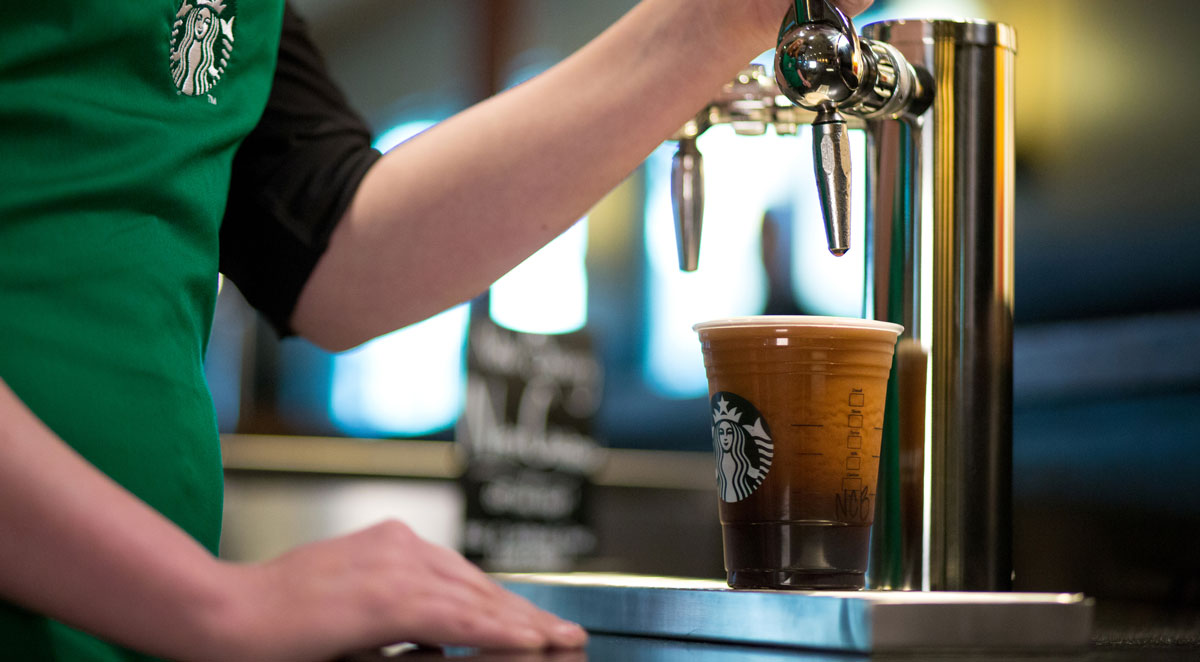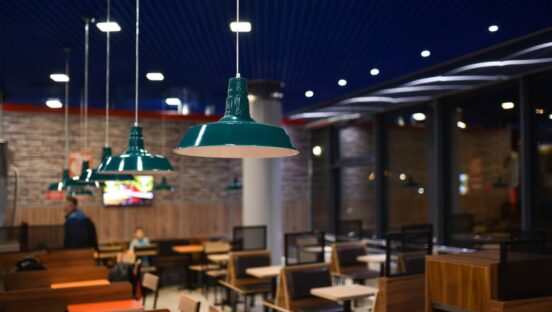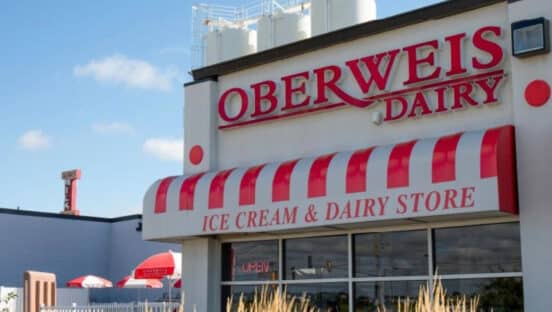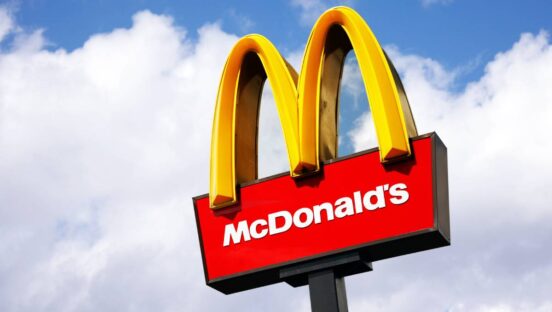This calendar year has been a wild ride for Starbucks. But the momentum appears to be swinging forward. Coming off its best quarterly performance in five periods, the java chain hosted its biennial Investor Conference December 13 in New York City. Starbucks addressed several key growth points, including beverage strategy, customer experience, and the blockbuster $7.15 billion Global Coffee Alliance with Nestlé. Perhaps the headline stealer, though, was Starbucks announcement that it plans to launch Starbucks Delivers to nearly a quarter of its U.S. company-operated stores with UberEats beginning in 2019. There were 9,684 corporate restaurants in the Americas as of September 30. It was 8,222 in the U.S. heading into the year. So the initiative promises to reach about 2,000 Starbucks locations by Q2 of fiscal 2019 (March).
This follows pilots in South Florida that covered more than 100 restaurants in Miami-Dade and Broward counties. Starbucks said the rollout also builds off learnings from its delivery experience in China. As part of a partnership with Alibaba, Starbucks has worked with Ele.me, China’s leading on-demand food delivery platform with 3 million registered delivery riders, to bring the experience to market.
As for Starbucks’ U.S. test, BTIG analyst Peter Saleh wrote in a note Friday that there’s risk in the proposed reward. Initial tests indicate that average check for delivery is two-and-half to three times higher than traditional in-store check—which aligns with peer results. Starbucks has seen roughly low-to-mid teens checks as opposed to the typical $5 order. The customer, again, as usual, skews younger. And the pilot was most successful in denser urban areas (another common delivery result).
Starbucks didn’t forecast how delivery could boost same-store sales or speak directly to potential margin impact. “… something we are not willing to discount given what we believe is a real risk of cannibalization,” Saleh wrote.
Just like McDonald’s, which is arguably the highest profile UberEats restaurant client (hard to argue, really), Starbucks won’t get access to customer-level data through its delivery transactions. “In our view, this makes it more difficult to assess jut how incremental these transactions will be over time,” Saleh added. “That said, we do not expect Starbucks to be able to access this data any time soon as we believe it would require Uber customers opting in to sharing their information with brand partners.”
In response, would Starbucks raise delivery prices to offset the third-party commission and combat cannibalization? If so, Starbucks would likely see delivery margins comparable to that of an in-store purchase and not generate a headwind, Saleh said.
In sum: Delivery is an exciting development for Starbucks, but we have no real idea how it’s going to affect the chain’s near-term sales figures. Time will tell.

The evolution of the customer experience
With product competition coming from all angles—local cafes to Dunkin’ revamping its espresso—Starbucks sees a path forward by bolstering its in-store experience and heritage as a “third-place” experience. This has been a focal point in past quarters as the chain looks to harness its digital flywheel and customers in fresh ways. And not just those loyal members of its robust rewards base.
Here are some key initiatives Starbucks laid out during the conference:
Repurposing employees’ time spent on administrative tasks to enhance customer engagement with the goal of improving capacity and throughput.
Deploying technology to automate inventory planning and replenishment by improving accuracy and efficiency of work routines.
Optimizing the company’s real estate footprint and store renovation strategy to deliver the next generation of the third place and drive higher financial returns.
On this first note, of repurposing employees’ time, Starbucks said in Q3 it wanted to cut 50 percent of current in-store administrative tasks by the end of the year, with the expectation of unlocking 2–3 hours daily for employees to focus on customer experience. Last updated, Starbucks said it freed up to one-and-half hours per day of non-customer facing tasks to customer-facing activity, depending on the store. One example provided was the initiation of automated inventory in 32 stores for all food products. Starbucks assigned a team to address dense urban market performance with New York as the initial target. It also rolled out training to build leadership.
“And we’re starting to see this work pay off. Our customer connection scores, which includes ratings on cleanliness and speed of service, in Q4 showed improvement across all dayparts and regions with September ending at an all-time high,” Roz Brewer, Starbucks’ chief operating officer said in October.
“We have long been performance driven while staying true to our mission and values to create positive change and global social impact. The leadership team and I believe Starbucks is better positioned than ever for continued success.” — Starbucks CEO Kevin Johnson.
Digitally speaking, Starbucks said those customers are purchasing two to three times as many products as those that are not digitally engaged, providing runway in initiatives that increase customer convenience, awareness, and value.
Starbucks announced three key areas of focus expected to drive 1–2 points of comps moving forward, including new member acquisition and related spend lift; further adoption of mobile order and pay, and the habituation it drives; and the upcoming enhancements to Starbucks’ Rewards loyalty program, which will enable customers to redeem for a variety of options, and to earn rewards faster.
Last quarter, Starbucks grew the number of digitally registered customers (non rewards members) from 6 million at the end of Q3 to 10 million at the end of Q4. It allowed Starbucks to engage with these guests directly via email with offers, like Happy Hour, and also led to rewards conversions. Starbucks achieved this through WiFi signup, opening mobile order and pay to customers, and revising its Happy Hour to engage guests directly through digital via single-use coupons that ask customers to sign up through the Starbucks app or directly via email.
“… we have to think of it as the top of the funnel—an enabler of the relationships that we can create that lead people eventually into the Starbucks Rewards program,” said Matthew Ryan, Starbucks’ chief marketing offer, in Q4.

Production and design innovation
While the in-store experience is a critical element of Starbucks’ future, beverage innovation is still where the company hangs its hat. It has seen highly incremental results from Draft Nitro Cold Brew, and, in turn, said during the conference it plans to roll out Nitro to all U.S. company-operated stores by the end of FY19 to meet customer demand for this growing platform. With nitro, Starbucks added roughly 700 stores in Q4 to reach 2,800 units at fiscal year’s end. Brewer said beverage contributed 3 of the 4 points in comps growth in Q4—the strongest performance of the year.
Starbucks also said it plans to refresh one-third of its store base over the next two years with new décor, equipment, and layout to meet mobile order pick-up and digital demand. More units are expected to follow.
Some broad targets
As mentioned before, Starbucks had a very strong finish to fiscal 2018. After a string of soft results, including its lowest comps in nearly a decade last quarter, the brand surprised Wall Street with an expectations-battering Q4. Starbucks posted same-store sales gains of 4 percent in the U.S. and Americas—its best in five quarters and easily ahead of analysts’ forecast of 2.7 percent. Adjusted earnings per share of 62 cents beat 60 cents. Revenue upped 10.6 percent to a record $6.3 billion from $5.7 billion last year (better than the expected $6.27 billion), and global same-store sales rose 3 percent over the 2.3 percent expectation.
During the investor conference, chief executive officer Kevin Johnson said Starbucks plans to expand its retail store portfolio by about 6–7 percent net new units and grow comps 3–4 percent globally in this coming year.
“Coffee is one of the fastest growing beverage categories globally and our over 350,000 partners around the world who wear the green apron are now serving 100 million customer occasions a week,” Johnson said. “We have long been performance driven while staying true to our mission and values to create positive change and global social impact. The leadership team and I believe Starbucks is better positioned than ever for continued success.”
Newly tapped chief financial officer Pat Grismer, who succeeded Scott Maw in late November, reaffirmed Starbucks’ fiscal 2019 guidance outlines after the Q4 performance. Grismer held the same role at Hyatt Hotels Corporation before joining Starbucks. Previously, he clocked time at YUM! Brands and The Walt Disney Company.
“As the undisputed category leader globally, Starbucks is well positioned to drive meaningful growth at scale, with more focus and discipline,” Grismer said. “Today we reaffirmed our FY19 guidance and outlined our ongoing growth model.” Starbucks’ long-term model calls for 7–9 percent revenue growth, slight margin improvement, and at least 10 percent earnings per share growth.

Of the deal with Nestle, announced in May, Grismer said, “The transformative Global Coffee Alliance with Nestlé will be accretive to non-GAAP EPS in FY20 and FY21, helping to deliver expected growth of at least 13 percent annually for those two years.” In the arrangement, Nestlé obtained the rights to market, sell, and distribute Starbucks, Seattle’s Best Coffee, Starbucks Reserve, Teavana, Starbucks VIA, and Torrefazione Italia packaged coffee and tea in all global at-home and away-from-home channels. Starbucks’ brand portfolio will also be represented on Nestlé’s single-serve capsule systems. Nestlé paid Starbucks $7.15 billion in closing consideration.
More on that Nestlé deal
Under the Global Coffee Alliance, Starbucks and Nestlé are “moving with speed” to innovate and develop go-to-market strategies for the global rollout of Starbucks At-Home Coffee portfolio, the company said. Starbucks will be the only brand outside of Nestlé to have branded products produced and packaged by Nestlé on the Nespresso and Dolce Gusto systems.
Starbucks announced that both companies have developed a range of Starbucks-branded products for the systems and Roast & Ground and Whole Bean coffees. The launch of these products in traditional CPG and foodservice channels will take place beginning in the spring of 2019. “With the Nespresso and Dolce Gusto install base estimated at more than any other single-serve system in the world, this is a tremendous incremental growth opportunity for the Global Coffee Alliance, as Starbucks and Nestlé work together to expand to new markets,” Starbucks said.
Status update on Starbucks’ workforce
In 2018, Starbucks introduced access to backup child and adult care through Care.com and expanded paid sick leave and parental leave.
Over the last three years, Starbucks has:
- Hired over 21,000 Veterans and military spouses.
- Hired nearly 45,000 Opportunity Youth, which are young adults between the ages of 16 to 24 who were previously neither working nor in school.
- Set up more than 12,000 partners who are working toward a pathway to a college degree, including providing access to full college tuition coverage through the Starbucks College Achievement Plan (SCAP) with Arizona State University. These partners stay one and a half times longer and are promoted at nearly three times the rate of their peers.
“With a proud history of industry-leading retention, Starbucks remains focused on providing opportunities and experiences for Starbucks partners to realize they are a part of something bigger,” the company said.












